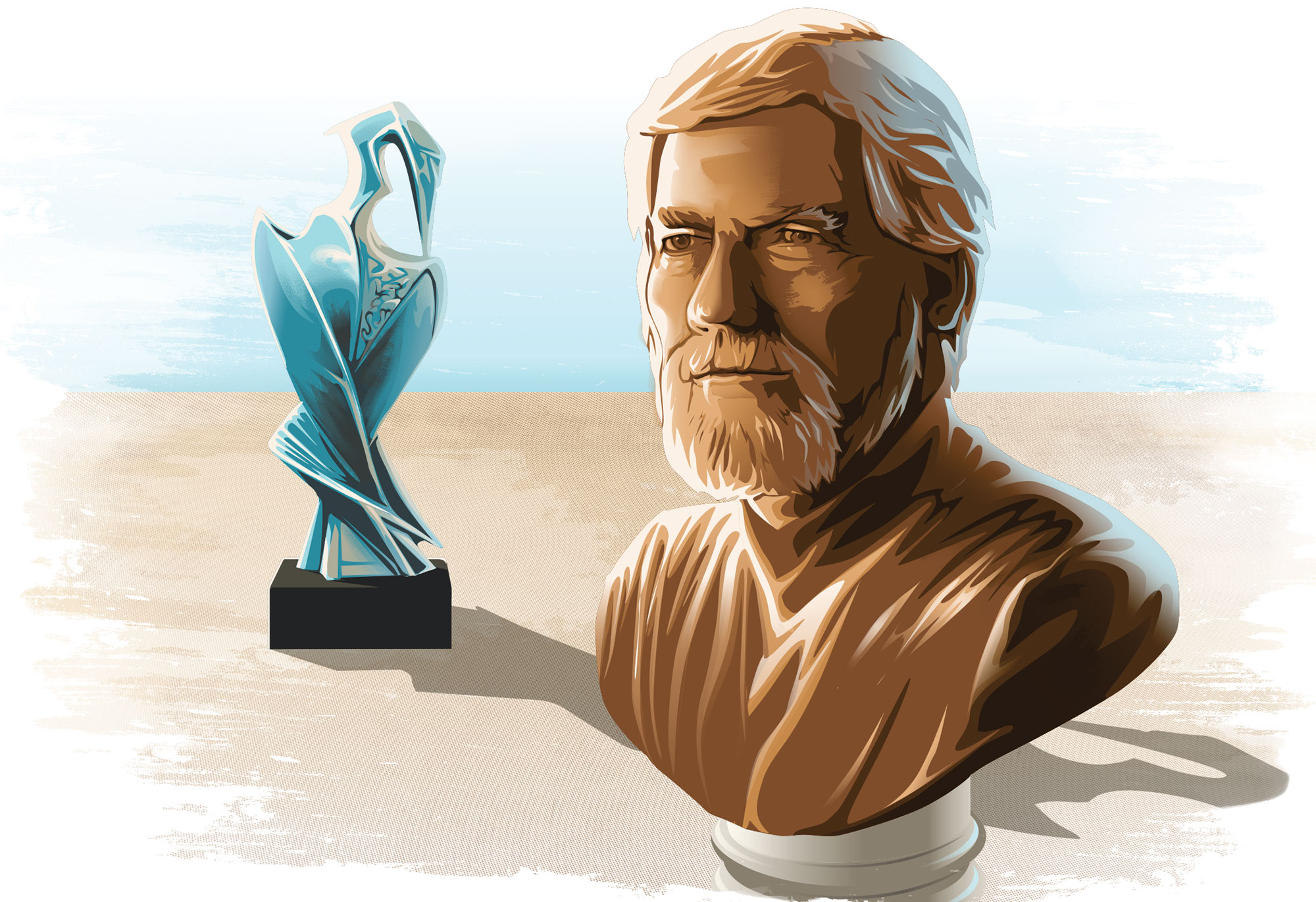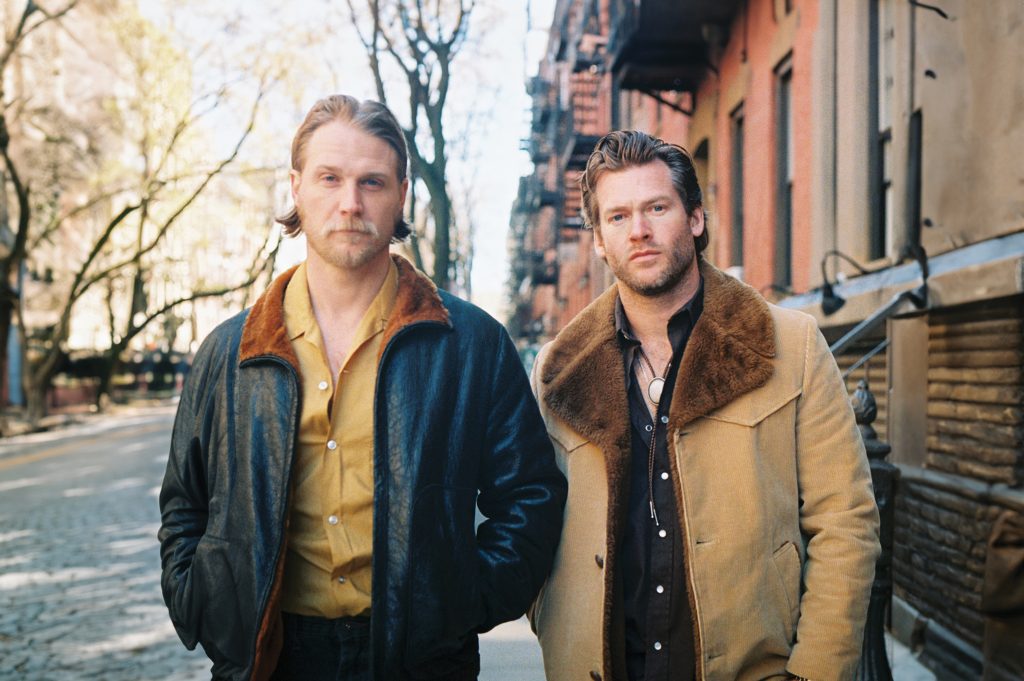
Kent Ullberg’s bronze sculptures dot the landscape across Texas—a giant bison in Corpus Christi, a cougar on the hunt in San Antonio, and eagles with outspread wings in Houston and College Station. An internationally renowned wildlife artist, Ullberg has been honing his realistic yet inspired depictions of magnificent animals for 55 years, resisting the trend of abstract expressionism that dominated sculpture during his early days as an artist in the 1970s.
The Swedish native inherited his parents’ artistic sensibilities and an appreciation for nature from his family’s seafaring heritage. Ullberg worked summers on his grandfather’s trawler before studying art at the Swedish University College of Art in Stockholm. Afterward, he landed a job as curator at the Botswana National Museum and studied taxidermy while also leading safaris in the African bush. Eventually, he made his way to the United States, where he drew on his knowledge of animal anatomy to build a career as a wildlife artist.
“When we drove over the tall Harbor Bridge and saw Corpus Christi Bay, my heart really started beating. It was so beautiful. … And we’ve been here ever since—41 years.”
After settling in Corpus Christi in 1978, Ullberg spent the next four decades producing scores of stunning sculptures and large-scale public commissions, including 22 public works in Texas. Two of his projects are among the largest wildlife sculptures ever made—a 36-foot-tall sailfish in Orlando, Florida, and larger-than-life geese and bison across five city blocks in Omaha, Nebraska.
Through Aug. 18, the Art Museum of South Texas in Corpus Christi is hosting the exhibition Kent Ullberg: Celebrating the Wild and Wonderful, displaying 64 of his sculptures spanning more than 50 years. We recently caught up with Ullberg to visit about his career and Texas’ role in his artistic development.
Q: How did you become a full-time working artist?
A: I had been working as the curator of the Botswana National Museum. There, I hosted staff from the Denver Museum of Nature and Science, and as a thank-you, they gave me a ticket to visit Denver. Then, when I was there visiting, they offered me the job to oversee their African exhibit. That was in 1974. In Colorado, I met several other artists who were making a living making Western wildlife art. Two years later, in 1976, I decided to work full-time on my sculpture, and I’ve been doing that ever since. I’m so grateful that I’ve been able to come to America, become an American citizen, and live my dream. I couldn’t have done it anywhere else.
Q: How did you land in Corpus Christi?
A: My wife, Veerle, and I first came to the area in 1978 on vacation. When we drove over the tall Harbor Bridge and saw Corpus Christi Bay, my heart really started beating. It was so beautiful. I grew up in a seafaring town in Sweden, and that view of the sea did it for me. We fell in love. We drove out to Padre Island, and there happened to be a house for sale. The realtor mentioned it had a studio above the garage. We had been there just a few hours, but we signed on the dotted line, and we’ve been here ever since—41 years.
Kent Ullberg’s showroom, Corpus Christi Art Connection, is at 5337 Yorktown Blvd., Suite 2C
Open Mon-Fri 9:30 a.m.-5 p.m.
361-851-1600
kentullberg.netThe retrospective exhibition Kent Ullberg: Celebrating the Wild and Wonderful features 64 sculptures, along with Ullberg’s sketchbooks and drawings, the tools of his trade, and hands-on interactive displays.
Open through Aug. 18. The Art Museum of South Texas,
1902 N. Shoreline Blvd., Corpus Christi
361-825-3500
artmuseumofsouthtexas.org
Q: Where do you make your sculptures?
A: The foundry I use is in Loveland, Colorado. I would make some of the molds here in Corpus Christi, and then I used to drive my old van up to the foundry to cast them. After our two boys were grown, I opened a studio in Colorado as well. I was getting more commissions, and I needed a larger space with cranes for the bigger works. Now I commute by flying back and forth. But we’re not winter Texans. We go to Colorado when we have work to do. Texas is our home.
Q: Where do you like to take visitors in Corpus Christi?
A: Of course, the beach. Corpus Christi has endless miles of beach and quite a lot of bird walks and nature trails. And if they are naturalists, we take them to Aransas National Wildlife Refuge, which is home to the whooping crane, a rare and special animal. I’ve been up there many times to study them. The Texas State Aquarium has more than marine life—it also has wonderful bird programs. I sometimes go to the aquarium with a sketchbook to be inspired, or to study a particular animal. We also have the Art Museum of South Texas, and the Corpus Christi Museum of Science and History, which tells the history of the area and has exhibits about pirates and treasures from shipwrecks. And there’s the Corpus Christi Symphony Orchestra.
Q: Where can people see your art around Corpus Christi?
A: I have a 17-foot bronze leaping marlin at the entrance sign for North Padre Island; a whooping crane sculpture at Rockport Center for the Arts; a white-tailed deer statue and a stylized kingfisher over 6 feet tall at the South Texas Botanical Gardens and Nature Center; a bison in front of the Art Museum of South Texas; and many others. I have three at the Texas State Aquarium: a sculpture of two river otters, another of a great blue heron, and another of a bald eagle.
Q: Which museums do you visit for inspiration?
A: I’m a bit partial to the Art Museum of South Texas. It has a remarkable building designed by one of the most famous architects in the world: Philip Johnson. It’s quite striking. Whenever I visit a city, I always visit the museums. In 2005, I had a big exhibition at the Houston Museum of Natural Science and got to spend a lot of time there. I get a little bit homesick sometimes in the African exhibits. They remind me of my youth and inspiration.
Q: Do you only work in bronze?
A: Bronze is an ancient, traditional medium for sculpture, going back to the classical Roman and Greek period, and thus has proven its durability. I also work in stainless steel—I helped pioneer the use of stainless steel in monumental sculpture. In 1979, I had a commission for Dallas’ Lincoln Centre—a group of shiny International Style buildings. The architects wanted something abstract, but I made an eagle in stainless steel. Later, it was relocated to the UT-Dallas Center for Brain Health. More recently, my stainless-steel Preening Heron sculpture was installed at the Rockport Center for the Arts in 2017.
Q: Do you consider your art to be environmental activism?
A: My art is not activist, but educational. I’m trying to share the beauty I see and show that it is really worth preserving. For example, I did a sculpture for the University of Texas Marine Science Institute in Port Aransas of a tarpon. Port Aransas used to be called “Tarpon” because it was famous for tarpon fishing. But the tarpon disappeared from the area because of environmental problems. My sculpture at the entrance of UTMSI is of a 9-foot-tall tarpon made up of about 50 other species of marine life, from microorganisms to mammals like dolphins. I called it
Interdependency. Everything in an environment is interdependent, and we play a role in that. We need to take care of it.








